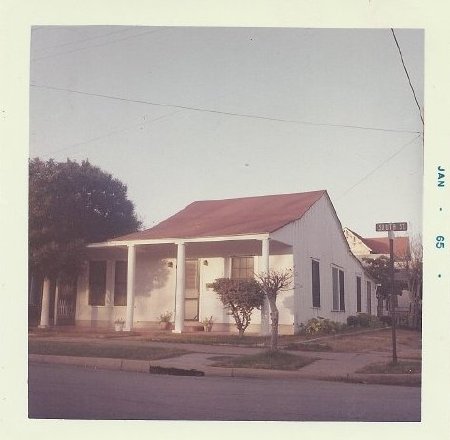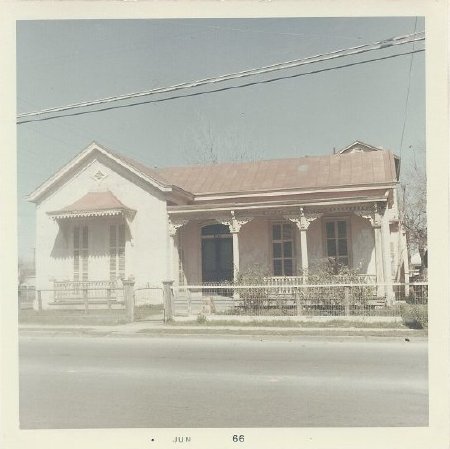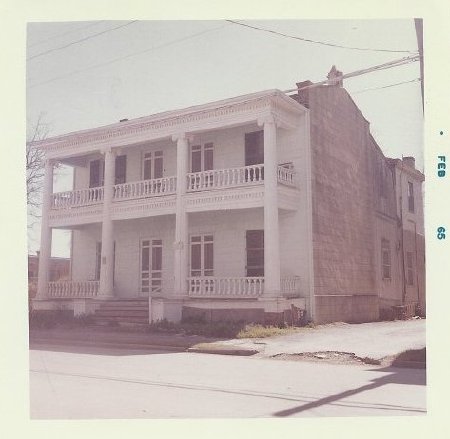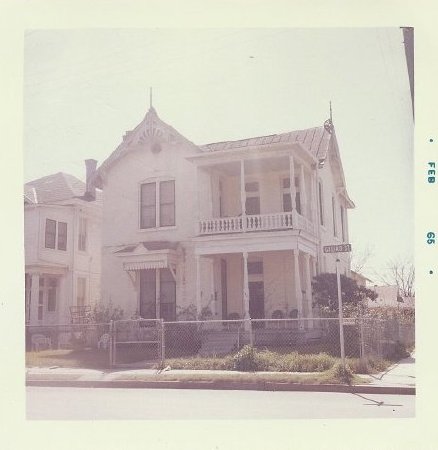There's no Place Like Home
History:
The fate of the historic buildings clustered thickly throughout downtown became a cause for concern once San Antonio embraced urban renewal. During the early 1960s, historic preservation became a hot topic in response to the extensive destruction of older, inner city neighborhoods being carried out nationwide. William Slayton, commissioner of the Urban Renewal Agency declared the need to "take into account ... less significant structures, unusual blendings of architectural styles that provide a running account of our tastes and technology..."
Within HemisFair's footprint lay an excellent collection of historic houses dating from the 1850s to the 1900s. Settlers built some of the earliest homes from caliche blocks made from soft, native stone. When the railroad arrived on the east side of town in 1877, it brought not only lumber and brick, but increased prosperity. The two-room, basic structures of the earlier era gave way to larger and more ornate homes in popular Victorian and Classical Revival styles.
The photographs on this page, taken in 1965, show examples of a few of the homes in Germantown, including some that were demolished. North Street disappeared under the new Convention Center. Fortunately, through the intervention of preservationists, including the San Antonio Conservation Society and several local architects, San Antonio Fair, Inc. did preserve and repurpose a core of historically significant buildings for use during HemisFair and beyond.
Within HemisFair's footprint lay an excellent collection of historic houses dating from the 1850s to the 1900s. Settlers built some of the earliest homes from caliche blocks made from soft, native stone. When the railroad arrived on the east side of town in 1877, it brought not only lumber and brick, but increased prosperity. The two-room, basic structures of the earlier era gave way to larger and more ornate homes in popular Victorian and Classical Revival styles.
The photographs on this page, taken in 1965, show examples of a few of the homes in Germantown, including some that were demolished. North Street disappeared under the new Convention Center. Fortunately, through the intervention of preservationists, including the San Antonio Conservation Society and several local architects, San Antonio Fair, Inc. did preserve and repurpose a core of historically significant buildings for use during HemisFair and beyond.
About this Image:
1) 335 South (demolished). This house is a typical Texas vernacular dwelling, c. 1870s to 1890s. The roof form serves as its defining characteristic. It features a side gable with two rake breaks, meaning that the pitch is steepest at the peak and breaks to a lower slope over the porch and the rear of the building.
2) 301 Goliad - John Kusch House (saved). This house was built in 1885 by Polish-born stonemason John Kusch on land purchased by his wife, Josepha. It remained in the family until descendants sold it to the Urban Renewal Agency in 1965. The restored house served as a Mexican restaurant during HemisFair. The one-story house represents as an excellent example of the Folk Victorian style, with many delicate decorative elements like the lacy brackets and spindlework frieze above the porch.
3) 144 North - F. I. Meyer House (demolished). Francis Ignatz Meyer came to San Antonio from Alsace in the 1850s. He soon prospered as a wine merchant with a shop across from the Menger Hotel on Alamo Plaza. Meyer also became a community leader, heading the building committee for St. Joseph's Catholic Church in 1859. His two-story stone house could be seen on Augustus Koch's Bird's Eye View map of San Antonio as early as 1877. The two-story front porch with Ionic columns was added between 1904 and 1911, when the Neoclassical style became popular.
4) 402 Goliad (demolished). This Victorian house, which appears on the 1896 Sanborn Map, was one of several larger two-story dwellings on Goliad Street. The tenor Rafaelo Diaz, who attended the nearby German-English School as a boy and went on to perform with the Metropolitan Opera Company of New York (1917-1936), once lived here. Noteworthy architectural features include: elaborately turned porch columns and spindles; carved bargeboards on the gable ends; roof finials; and an ornate wooden awning above the first-floor front window.
2) 301 Goliad - John Kusch House (saved). This house was built in 1885 by Polish-born stonemason John Kusch on land purchased by his wife, Josepha. It remained in the family until descendants sold it to the Urban Renewal Agency in 1965. The restored house served as a Mexican restaurant during HemisFair. The one-story house represents as an excellent example of the Folk Victorian style, with many delicate decorative elements like the lacy brackets and spindlework frieze above the porch.
3) 144 North - F. I. Meyer House (demolished). Francis Ignatz Meyer came to San Antonio from Alsace in the 1850s. He soon prospered as a wine merchant with a shop across from the Menger Hotel on Alamo Plaza. Meyer also became a community leader, heading the building committee for St. Joseph's Catholic Church in 1859. His two-story stone house could be seen on Augustus Koch's Bird's Eye View map of San Antonio as early as 1877. The two-story front porch with Ionic columns was added between 1904 and 1911, when the Neoclassical style became popular.
4) 402 Goliad (demolished). This Victorian house, which appears on the 1896 Sanborn Map, was one of several larger two-story dwellings on Goliad Street. The tenor Rafaelo Diaz, who attended the nearby German-English School as a boy and went on to perform with the Metropolitan Opera Company of New York (1917-1936), once lived here. Noteworthy architectural features include: elaborately turned porch columns and spindles; carved bargeboards on the gable ends; roof finials; and an ornate wooden awning above the first-floor front window.
Credit:
Courtesy of San Antonio Conservation Society Foundation




